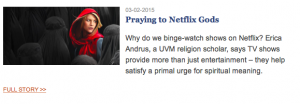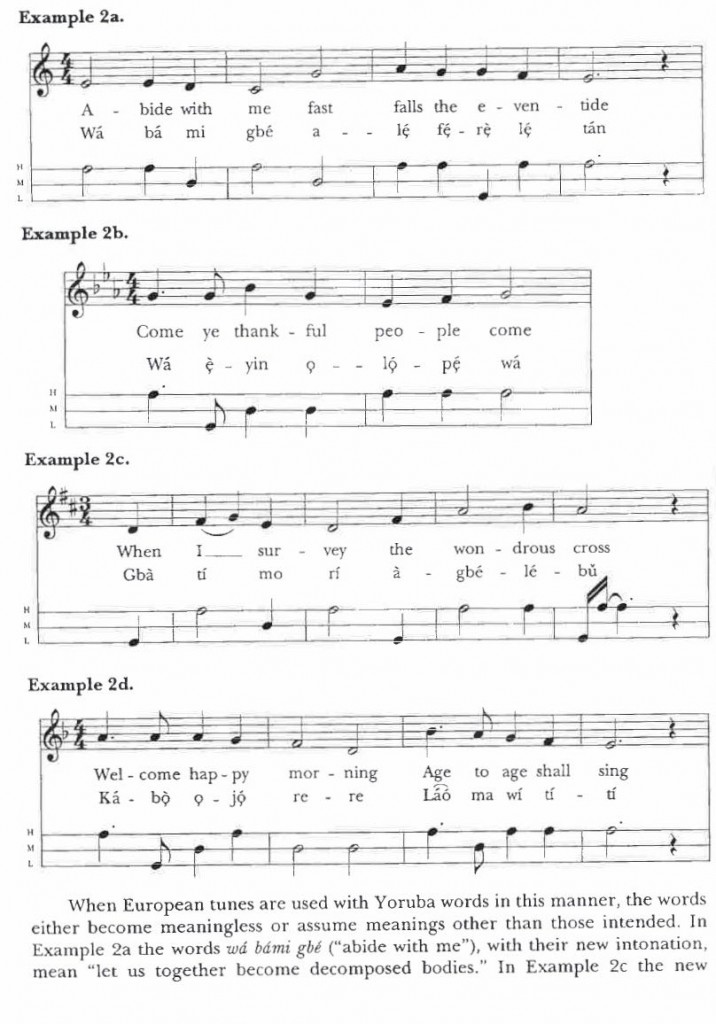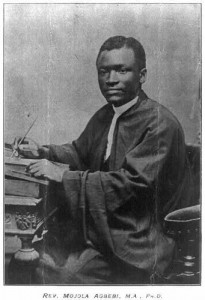Todne Thomas Chipumuro
Cariari, Costa Rica
6/18/15
Yesterday, I arrived in Costa Rica to prepare for a writer’s retreat that I will attend for the next five days. As I checked my social media feed over my morning coffee, I was alarmed to discover that a white gunman shot and killed nine black Bible study attendees last night at the Emanuel AME Church in Charleston, South Carolina last night. The young white man (who is now being identified as 21-year old Dylan Storm Roof)[1] allegedly sat in on the service before nearly an hour before he voiced racist anti-black rhetoric and murdered the three men and six women present[2]. Shocked into reality, my unexamined idea that my writing retreat here could also double as a respite from the onslaught of news about anti-black violence in the United States and the anti-black citizenship discourses and Haitian deportations proposed by the Dominican Republic has quickly dissipated. Black lives here and there are being devalued by the state and its citizens. Blackness, though somehow being called into question by the scandal of racial shapeshifters, still remains an alibi for white supremacist dehumanization, expulsion, social and literal death.
The current tragedy being weathered by the membership of Emanuel AME Church and the broader Charleston community is significant for a number of reasons. As I alluded to above, it evokes a broader conversation about the virulent anti-black racism that is presently being enacted upon black bodies, visualized by technological innovations, and circulated for broader conversation and consumption. Such violence has been a steady testament to the racism that structures carceral govermentality including policing practices and has also initiated meditations on black humanity, the valuation of black lives, the in/visibility of violence against black women and black transgender people, and black theodicy—a theological contemplation about the reasons for black pain and suffering best expressed by a Charleston pastor during a prayer vigil last night, “The question is God: why? Somebody here tonight needs to know.[3]”
Nonetheless, the shooting at Emanuel AME is tentatively being classified as a hate crime and is being represented by police representatives and local political figures as a heinous and grievous act, a moral tone not often attributed to the killings of African Americans by police on the part of the mainstream criminal justice establishment. Moreover, the shooting took place within the institution of the church often stably understood as the private sphere, not the public domain of the street, or the contested public/private spaces of the streets and pools of gated communities involved in Sanford, FL or McKinney, TX. The shooting of African Americans within the sanctified, private grounds of the church presumably signals a different kind of targeting, a hateful intentionality that is perhaps not associated with the other instances of anti-black violence we are witnessing in the news. Dylan Roof emerges as a “proper racist” that can be castigated by the broader body politic, a black-and-white case study of hatred that does not speak to the collective ambivalences, cognitive racial biases, and racial anxieties of post-racial racism. Nonetheless, I would advise caution in divorcing the Charleston shooting from the broader context of anti-black violence that we are witnessing and experiencing; of decontextualizing this as an individual civilian crime; of making this an issue of the private sphere that is divorced from contemporary contemplations of the state. In the poignant conversation “Do Black Lives Matter?: Robin D.G. Kelley and Fred Moten in conversation,” Moten observes that the shooting of Mike Brown illustrates a broader impulse of white settler colonialism and the white supremacist heteropatriarchal state: the execution of black social life which is defined as an insurgent sociality.[4] It is that sociality, signified by black youth like Michael Brown and Trayvon Martin and the gathering of the slain members of Emanuel AME, that is othered, harassed, and surveilled by the state, state employees, and civilians who deputize themselves as protectors of white supremacist capitalism.
From a historical perspective, the shooting at Emanuel AME is also important because of the particular history of the African Methodist Episcopal (AME) denomination and of the historical role of black churches more broadly. Emanuel AME is shaped by a genealogy of African American Christian protest. The AME Church is the first black-organized religious denomination in the United States. Dating back to 1816, the AME denomination was organized by the former slave Richard Allen and his contemporaries who were disaffected with the racial marginalization they experienced in the predominately white St. George’s Methodist Episcopal Church in Philadelphia, PA.[5] An extension of a critical African American institutional and religious complex that sought to create spaces of sanctuary (like the Mother Bethel AME Church in Philadelphia organized in 1793) in which people of African descent could worship, rebel, and nourish their full humanity, the Emanuel AME Church in Charleston was founded in 1816 as well during the early days of the AME denomination. A black southern church with its own rich history that has been heavily shaped by the white supremacist plantation complex and governance, Emanuel AME Church was burned during the events and controversy surrounding the Denmark Vesey slave revolt in 1822—a revolt that was shaped by a radical anti-racist emancipatory view of Christianity. The church was soon rebuilt. Services however were forced underground when all local black churches were outlawed in 1834. The membership of Emanuel AME has thus inherited a tradition of struggle and endurance.
More broadly, black churches like Emanuel AME with its own denominational history of fostering Afro-Christian critique and institutional self-determination and other southern black churches were shaped by the moral critique fostered by the Civil Rights movement in the mid-twentieth century. It was during these times in which the 16th Street Baptist Church in Birmingham, AL (a key site for civil rights activism) was bombed by white supremacists in 1963 killing four African American girls. The Black Church, then, in a popular white supremacist consciousness emerged as a threat, a site of insurgency, and a strategic node for terrorism. The interplay between black churches and black protest in the times of slavery and the Civil Rights movement has generated a black civic religiosity, embodied in the senatorial career of the recently deceased Emanuel AME pastor Rev. Clementa Pinckney. Therefore, a normative reading of Emanuel AME as distinct and safely ensconced in the private sphere, of the black church solely as a space of black worship and sanctuary divorced from the state, and of the perpetrator as a civilian acting individually divorced from the state must be re-contextualized within a broader context of racist governmenality and Afro-Christian struggle.
[1] http://www.huffingtonpost.com/2015/06/18/dylann-storm-roof-charleston-church-shooting-suspect_n_7612232.html
[2] http://www.nytimes.com/2015/06/19/us/charleston-church-shooting.html
[3] http://www.wsj.com/articles/shooting-erupts-at-historic-black-church-in-charleston-south-carolina-1434601669
[4] https://vimeo.com/116111740
[5]http://www.google.com/url?sa=t&rct=j&q=&esrc=s&source=web&cd=4&ved=0CDQQFjAD&url=http%3A%2F%2Fnationalhumanitiescenter.org%2Fpds%2Fmaai%2Fcommunity%2Ftext3%2Fallenmethodism.pdf&ei=j_aCVeVehMWCBL-ugKgG&usg=AFQjCNEJ9jdNR-QNA93mHTA9K3JOrD86Dw&sig2=fChkVmD1Yaf6jT6rQP00FA&bvm=bv.96041959,d.eXY

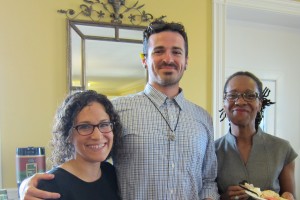
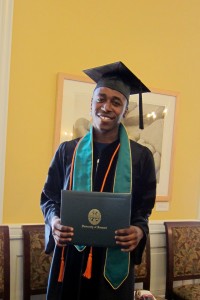
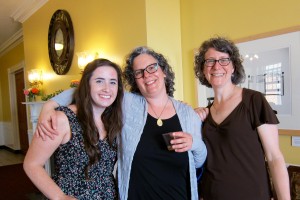
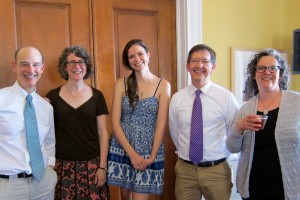
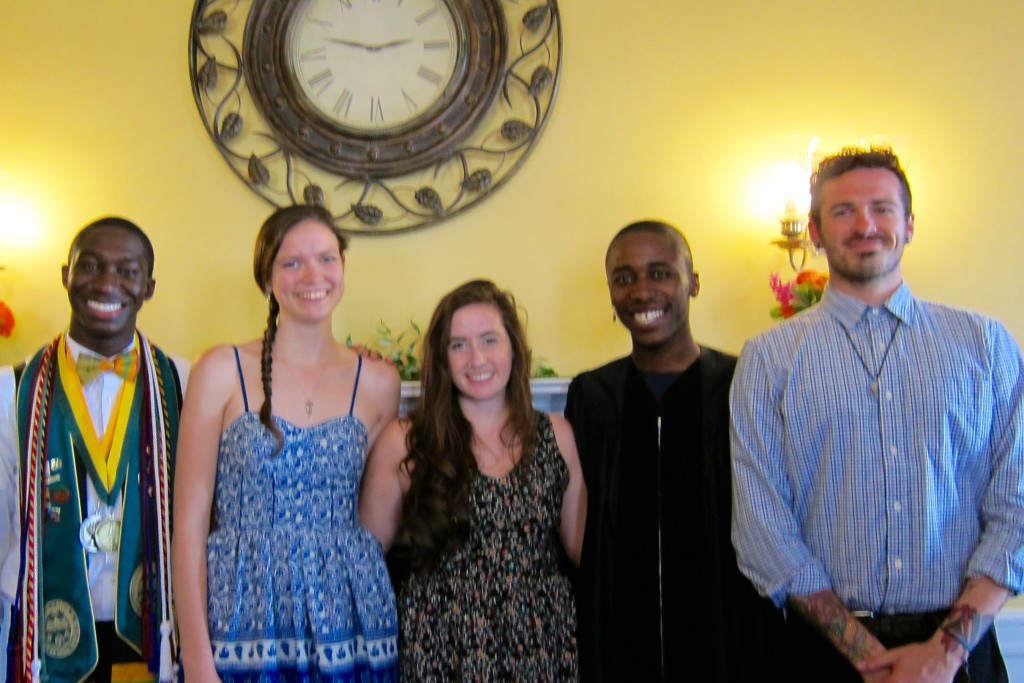
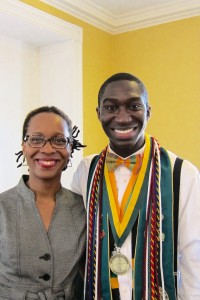
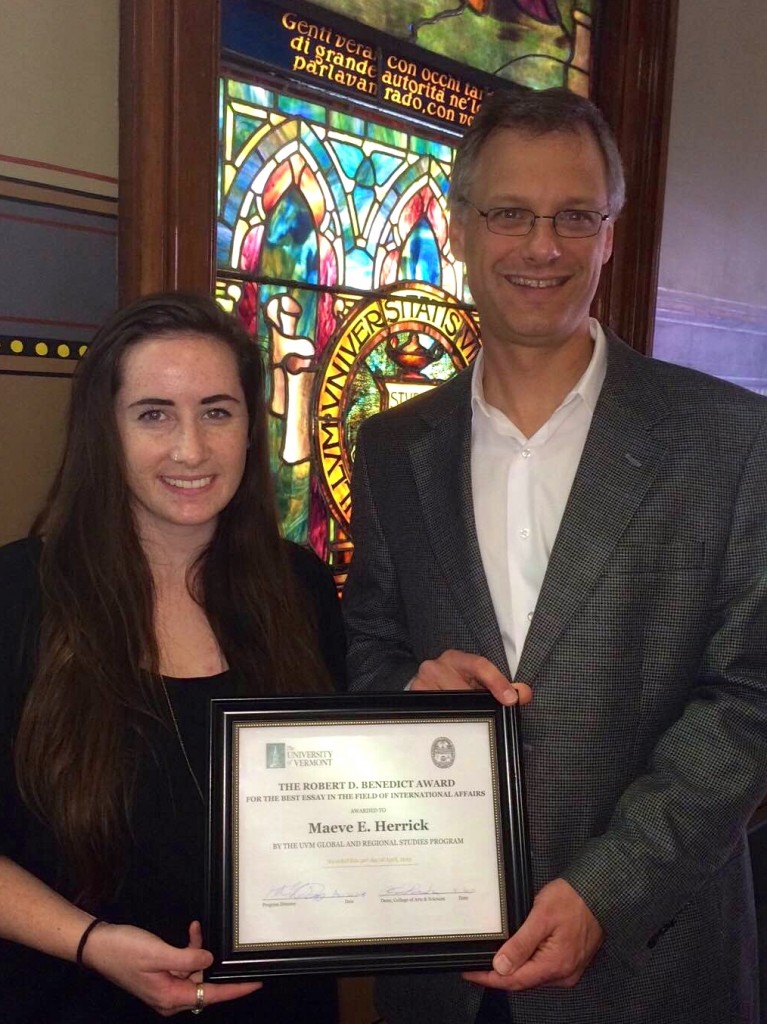
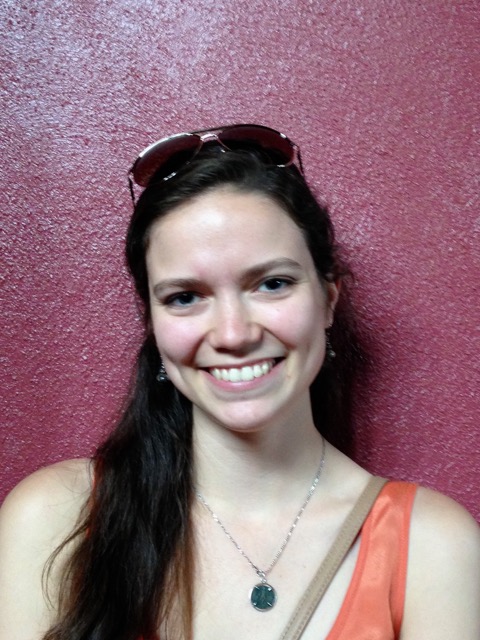
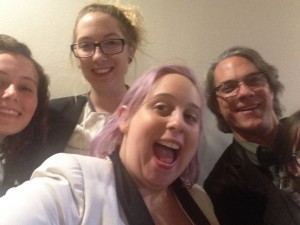
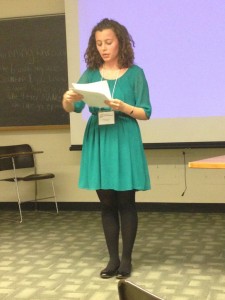

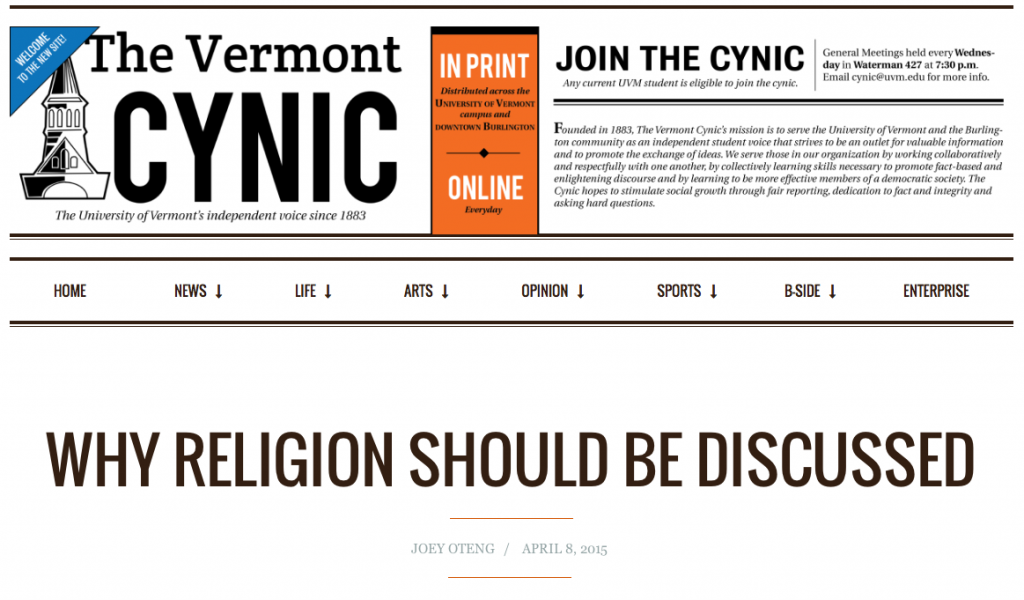

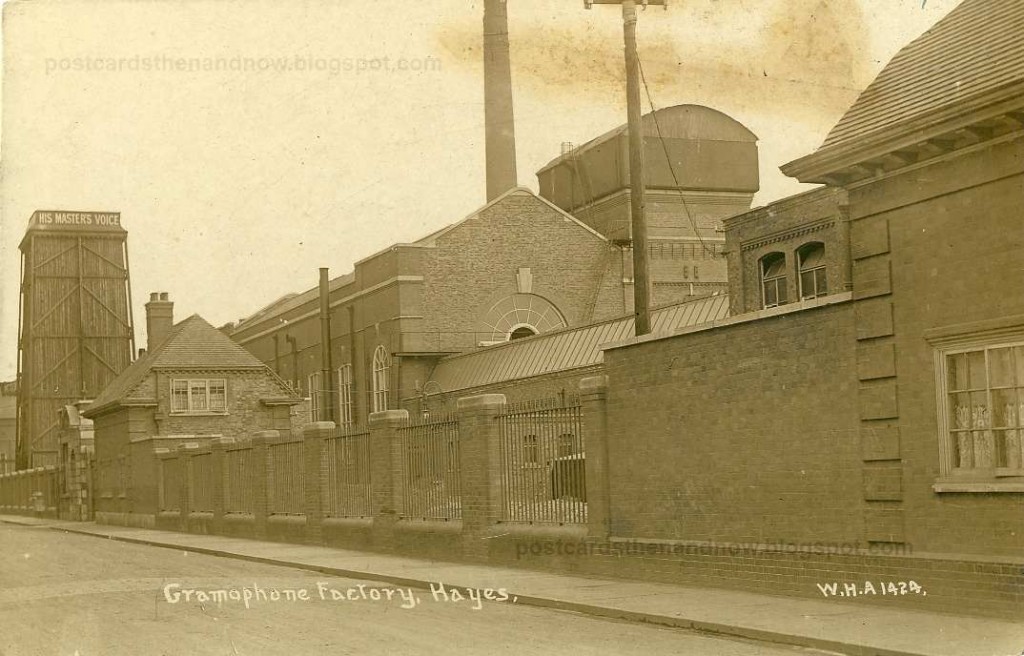
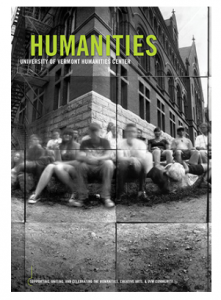 evance of work by UVM faculty, students, and alumni. It featured a number of Religion Department faculty!
evance of work by UVM faculty, students, and alumni. It featured a number of Religion Department faculty!